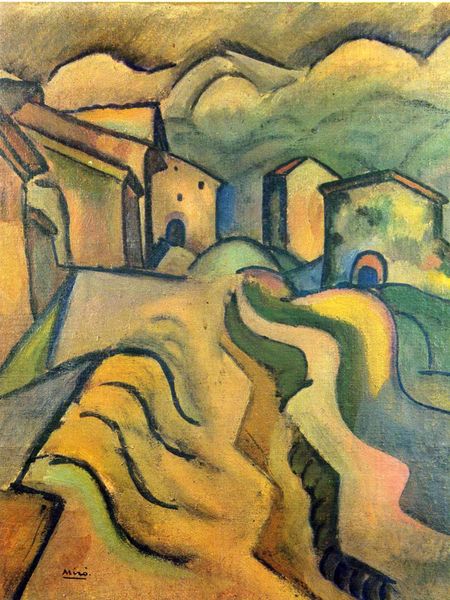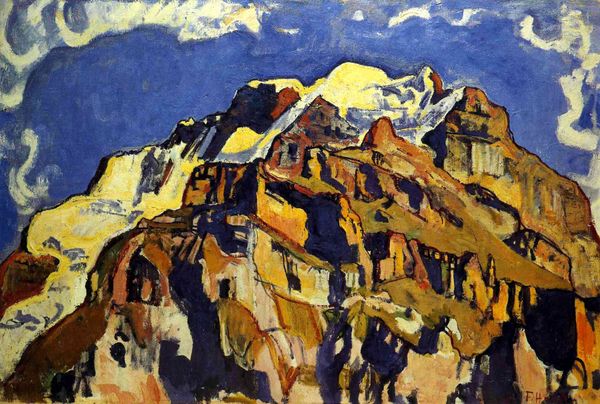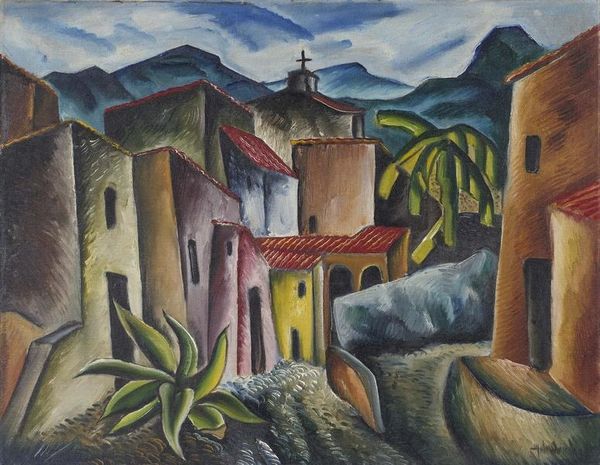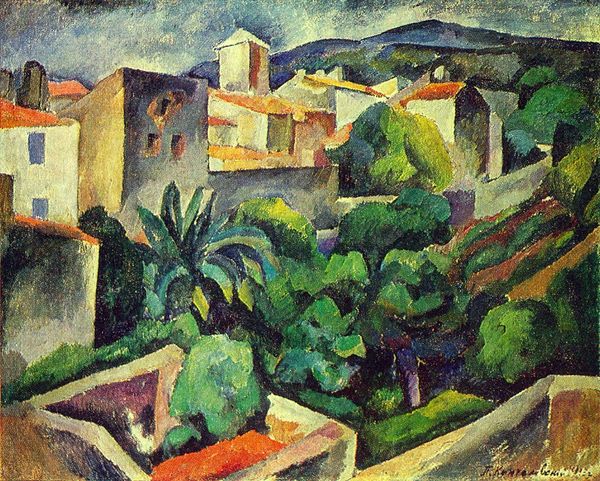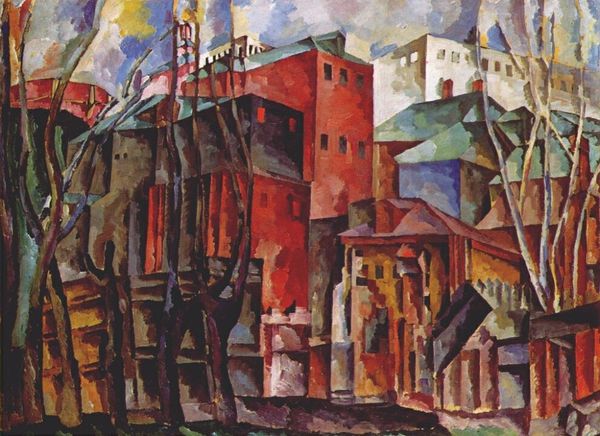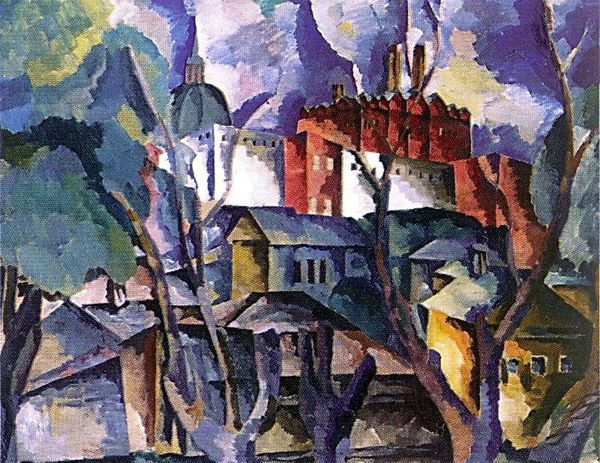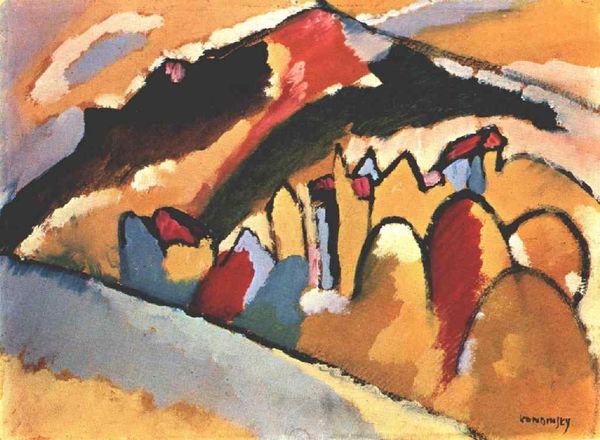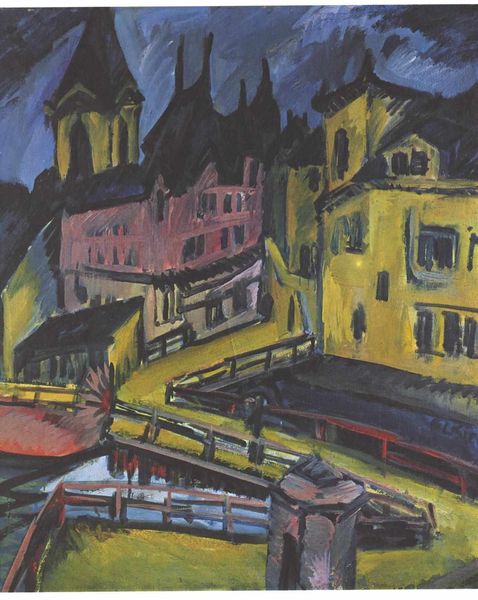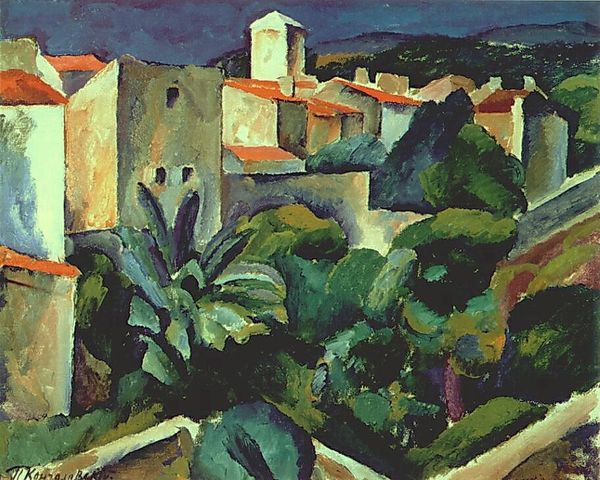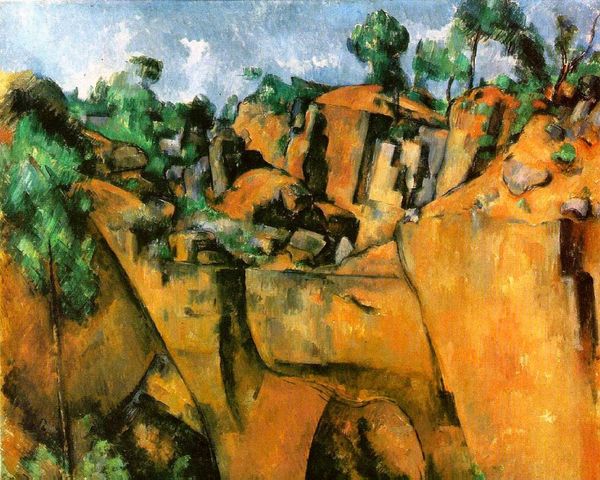
Copyright: Public domain US
Curator: Welcome. Before us hangs an early painting by Joan Miró, created in 1918. Though titled simply “Untitled”, it offers a vibrant look at the artistic development of this soon-to-be Surrealist icon. Editor: I’m immediately struck by the heavy, almost turbulent atmosphere. The sky looks quite menacing, overshadowing the architecture below. Curator: It's interesting you say that. I see Miró grappling here with Expressionism and perhaps even Fauvist color palettes. These art movements were becoming prominent at the time and offered artists like Miró avenues for self-expression, as society became increasingly disconnected following WWI. He uses bold colors and somewhat distorted forms to convey emotion. Editor: Precisely! It’s as if the city itself is in turmoil, reflecting the societal anxieties brewing at the end of the war. The shadows that fill every archway have this unsettling presence. We see these boats sitting in the lower foreground… Do they symbolize stalled journeys or maybe opportunities, and who is prevented from either taking advantage or setting sail? Curator: A fitting interpretation. I imagine Miró may have been channeling feelings that were widespread within the culture. The positioning of that central church creates an important point in this composition. It reminds us of traditional institutions and the people still clinging to hope amid global turbulence. It asks the question "where can we go to for help and is that institution also complicit in our current climate?" Editor: So, it's an ambiguous hope, perhaps? An element both anchoring the scene and, in its rigidity, highlighting the era's restrictive norms. That is definitely a topic to unpack, which extends to questions about class, race, and who does that help reach. Overall, it makes me question how we look to those central power structures, what part they play, and what change needs to happen there to better benefit marginalized identities and communities. Curator: Miró evolved drastically beyond this Expressionist phase. However, this early work presents an intriguing perspective on a world on the cusp of profound changes. It's also important that visitors recognize what society was going through in the era this was created and not diminish those realities and struggles. Editor: A powerful visual echo of its time, indeed. Its relevance transcends art history, touching upon enduring social and political dialogues that persist even now.
Comments
No comments
Be the first to comment and join the conversation on the ultimate creative platform.

